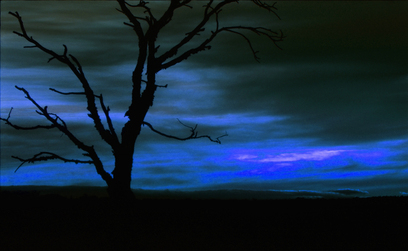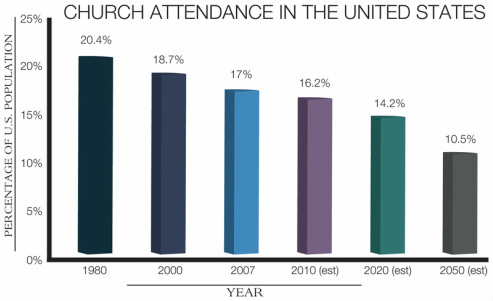THE PRESENCE OF DARKNESS

Hope necessarily rises out of the absence of hope. If not, there would be nothing for which to hope—hope is the solution to hopelessness. In the same way, light assumes the presence of darkness. If not, there would be nothing for which to bring light—light is the solution to the problem of darkness. Before attesting to light of Jesus Christ that the Northstar Church Multiplication Center seeks to reflect, it is first necessary to examine the darkness that is being broken through.
People often ask the Northstar Center team about the need for new churches. With megachurches built to host thousands of people and towns with churches located just blocks apart, the question seems valid. “Why is it necessary to plant churches? Aren’t there enough churches?”
The day may come when no new churches are needed, but that day is far from reality. In the United States today, only 16.8% of people attend church on a given weekend. Though some may discredit the ineffectiveness of the local church in reaching people by lauding other great accomplishments, the bottom line remains the same: a small and shrinking percentage of the U.S. population is being reached.
Dr. David T. Olson, Director of the American Church Research Project, suggests that the future of the church in the United States is bleak if nothing changes. While over one-fifth of Americans attended church in 1990, the percentage of churchgoers has continued to drop ever since. By the year 2050, Olson estimates that only one in ten Americans will attend church.
People often ask the Northstar Center team about the need for new churches. With megachurches built to host thousands of people and towns with churches located just blocks apart, the question seems valid. “Why is it necessary to plant churches? Aren’t there enough churches?”
The day may come when no new churches are needed, but that day is far from reality. In the United States today, only 16.8% of people attend church on a given weekend. Though some may discredit the ineffectiveness of the local church in reaching people by lauding other great accomplishments, the bottom line remains the same: a small and shrinking percentage of the U.S. population is being reached.
Dr. David T. Olson, Director of the American Church Research Project, suggests that the future of the church in the United States is bleak if nothing changes. While over one-fifth of Americans attended church in 1990, the percentage of churchgoers has continued to drop ever since. By the year 2050, Olson estimates that only one in ten Americans will attend church.
The Minneapolis-St. Paul region’s statistics are no better than the nation when it comes to church attendance. Most of our churches are in communities where less than 17% of the population attends church on a given Sunday.
Essentially the church is faced with a choice: either continue what we’re doing and hope that the projections are wrong, or acknowledge that a change is needed and respond accordingly.
The Northstar Church Multiplication Center understands what is at stake and is predicated on addressing this crisis in the church. We believe that there is no more effective way for the church to reach people than to plant churches.
Essentially the church is faced with a choice: either continue what we’re doing and hope that the projections are wrong, or acknowledge that a change is needed and respond accordingly.
The Northstar Church Multiplication Center understands what is at stake and is predicated on addressing this crisis in the church. We believe that there is no more effective way for the church to reach people than to plant churches.

